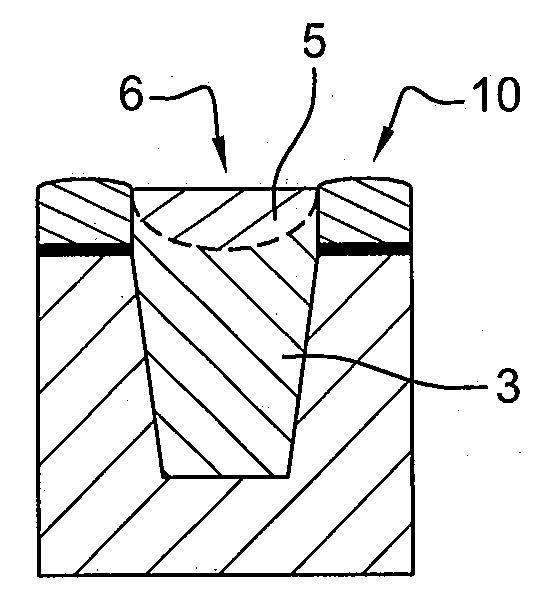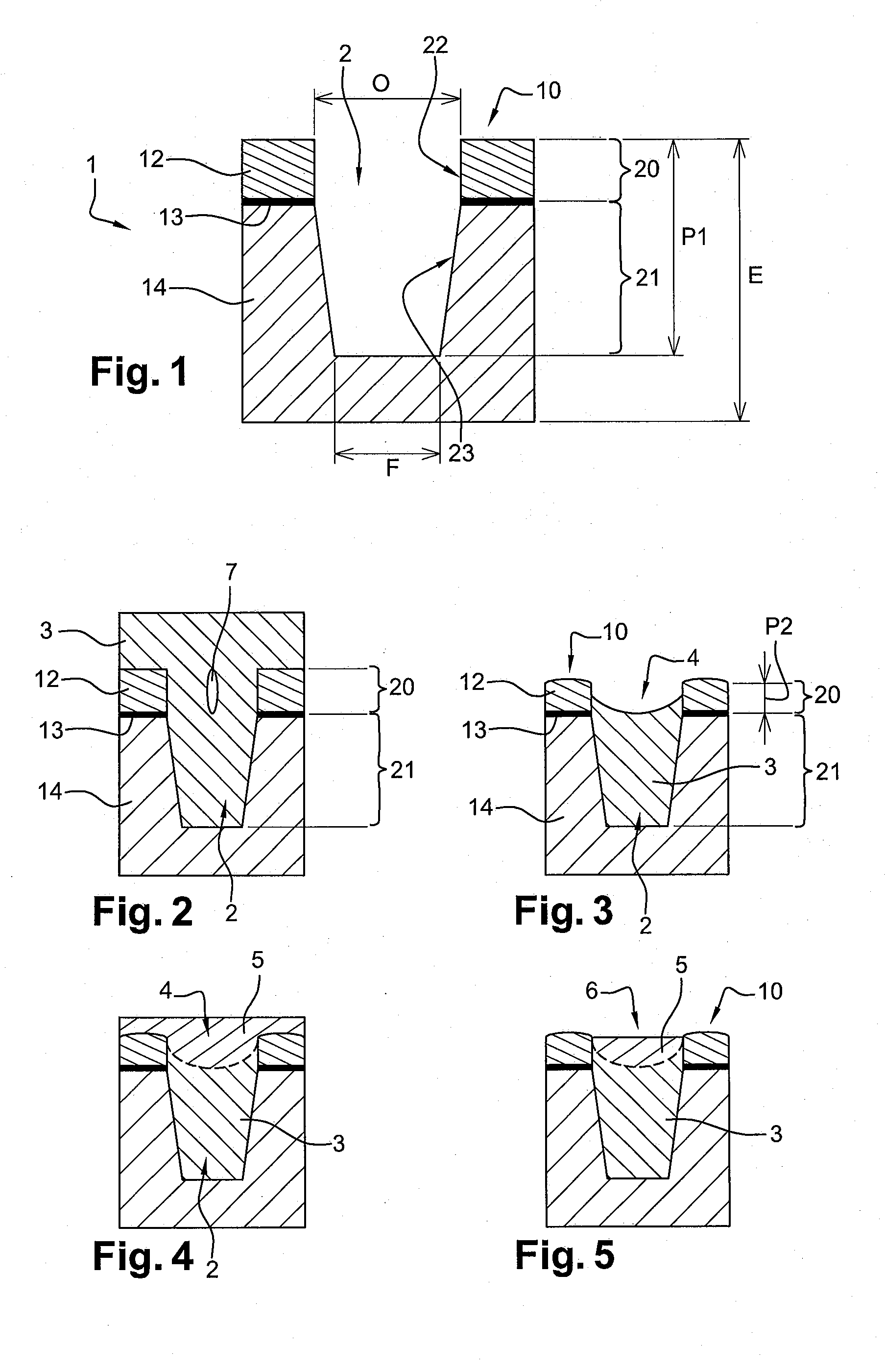Method for forming an isolation trench
a technology of isolation trenches and trenches, applied in the field of microelectronics, can solve the problems of reducing the probability of forming voids deep inside the trench, increasing so as to reduce the probability of forming voids in the trench
- Summary
- Abstract
- Description
- Claims
- Application Information
AI Technical Summary
Benefits of technology
Problems solved by technology
Method used
Image
Examples
Embodiment Construction
[0029]The method for forming an isolation trench in a substrate especially comprises digging into an upper portion a first cavity totally filled with a dielectric material, to remove the possible voids present in this upper portion. The second cavity thus formed preferably has a geometry capable of limiting, or even eliminating, the occurrence of voids on deposition of another dielectric material in this second cavity. FIGS. 1 to 5 illustrate the steps of the method for forming such an isolation trench in a substrate 1 having an upper surface 10.
[0030]This method first comprises:
[0031]the forming (FIG. 1), across the thickness E of substrate 1, of a first cavity 2 opened towards upper surface 10; and
[0032]the total filling (FIG. 2) of first cavity 2 with a first dielectric material 3.
[0033]Preferably, first cavity 2 has a geometry suitable for a conformal deposition of the first dielectric material 3 without the forming of voids in a lower portion 21 of this first cavity 2 and with ...
PUM
 Login to View More
Login to View More Abstract
Description
Claims
Application Information
 Login to View More
Login to View More - R&D
- Intellectual Property
- Life Sciences
- Materials
- Tech Scout
- Unparalleled Data Quality
- Higher Quality Content
- 60% Fewer Hallucinations
Browse by: Latest US Patents, China's latest patents, Technical Efficacy Thesaurus, Application Domain, Technology Topic, Popular Technical Reports.
© 2025 PatSnap. All rights reserved.Legal|Privacy policy|Modern Slavery Act Transparency Statement|Sitemap|About US| Contact US: help@patsnap.com


